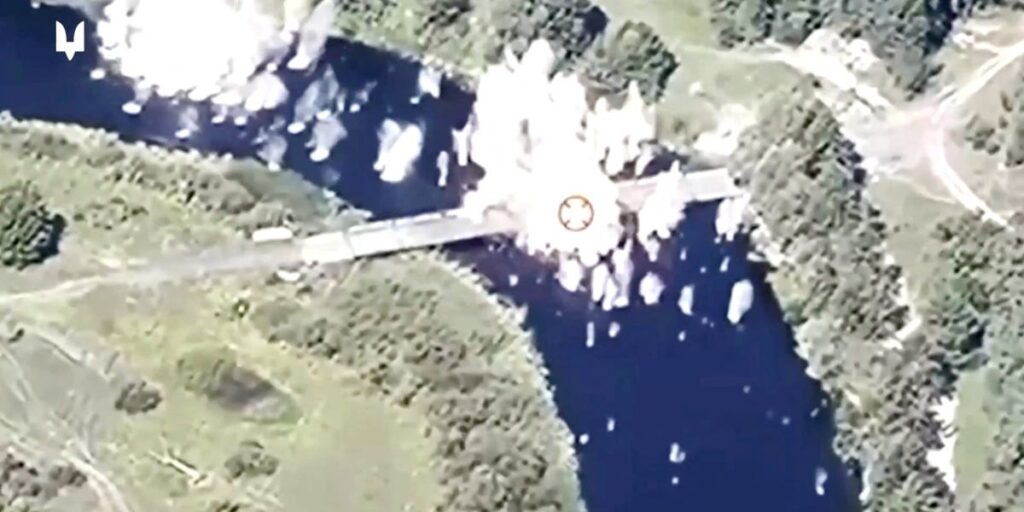Recently released satellite images from the British Ministry of Defence show that several bridges in Russia have been destroyed after attacks from Ukraine.
Ukraine has targeted bridges in the Kursk region as part of its weeks-long invasion of Russia, apparently seeking to disrupt logistics and supply lines as Moscow increasingly moves resources there.
The satellite images, taken last month but only released on Saturday, show the aftermath of Ukrainian attacks on a road bridge and two pontoon bridges in Kursk.
The Ukrainians “continue to hamper Russian logistics in the Kursk region with a series of attacks that have destroyed road and pontoon bridges over the Seym River,” the British Ministry of Defence wrote in a statement information update.
Russia can use its floating pontoon bridges, which are temporary, to ferry personnel and military equipment across the Seym. These bridges came into play when Ukrainian attacks took out some of the more permanent structures.
Aftermath of a strike on a traffic bridge. United Kingdom Ministry of Defence
The aftermath of a strike on a pontoon bridge. United Kingdom Ministry of Defence
The aftermath of a strike on another pontoon bridge. United Kingdom Ministry of Defence
The Ukrainian Air Force played an important role in the campaign against bridges.
“Towards Kursk. Minus one more bridge!” the Ukrainian Air Force wrote in an August 18 Telegram statement after an attack.
“The air force continues to deprive the enemy of logistical capabilities with targeted air strikes, which significantly affects the course of hostilities!” it added.
The bridge campaign underscores how Ukraine has been able to use air power to support its ground forces in Kursk. Kiev has struggled to conduct combined arms operations like this in other areas of the frontline throughout the war.
Ukraine has also used ground-launched weapons, such as the US-supplied High Mobility Rocket Artillery System, or HIMARS, to attack bridges in Kursk.
Ukraine surprised the Kremlin and the international community in early August with a sudden invasion of Kursk, the largest attack on Russian soil by a foreign enemy since World War II.
The British Ministry of Defence said on Sunday that Ukraine has controlled 900 square kilometres of territory in Kursk since mid-August.
Questions remain about whether it can hold on to its gains. Russia recently launched counteroffensive operations in Kursk. The British Ministry of Defence said Moscow likely recaptured several villages in the region through the efforts, which were led by airborne and naval infantry troops.
Ukraine continues to express its commitment. “Every day, unwavering attention is paid to the front line and our operation in the Kursk region,” Ukrainian President Volodymyr Zelenskyy said in a speech to the nation on Sunday, according to a transcript of his remarks. “We continue our active operations and it is crucial that the ‘exchange fund’ for us, for our state, is replenished.”

